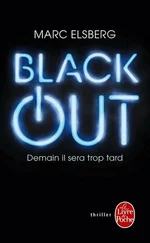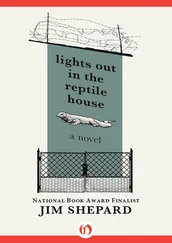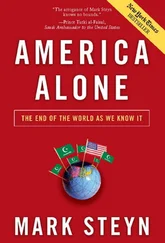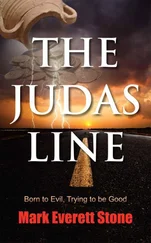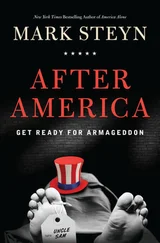As I always say, that’s how nations die – not by war or conquest, but by a thousand trivial concessions, until one day you wake up and you don’t need to sign a formal instrument of surrender because you did it piecemeal. How many Muslims in Toronto sympathize with the aims of those arrested last week? Maybe we could use a book on the subject. But which Canadian house would publish it? And would the fainthearts at Indigo-Chapters carry it?
* * *
The west with its insistence on democracy seems to us eminently gharib, foreign, because it is a mirror of what frightens us, the wound that 15 centuries have not succeeded in binding: the fact that personal opinion always brings violence. Under the terror of the sword, political despotism has obliged Muslims to defer discussion about responsibility, freedom to think, and the impossibility of blind obedience.
FATEMA MERNISSI
Islam And Democracy (1992)
In this section we look at the tensions, trivial and profound between Islam and the west, starting with the 2006 Danish cartoons crisis that ensnared my comrade Ezra Levant in the clutches of the “human rights” regime. The decision by a small newspaper in Jutland to print various depictions of Mohammed was whipped up by opportunist imams into a pretext for global rioting – much of it directed not only against Denmark, but against infidels in general. In Lahore, the usual excitable young lads from the religion of pieces destroyed the local McDonald’s. Apparently the lively Pakistanis had burned every single Danish target in the city (one early Victor Borge LP left behind by the last British governor) and had been obliged to diversify. So they dragged Ronald McDonald out of the joint, torched him in the street and danced around his flaming remains shouting “Death to America! Death to Britain! Death to Tony Blair!” Which I don’t even get. I mean, Ronald and Tony seem kind of similar from a distance but even on the all-infidels-look-alike-to-me-especially-when-they’re-alight thesis they’re not that easily confused.
Ezra Levant’s magazine, The Western Standard , argued that you couldn’t cover this story without showing the cartoons. In consequence, it was banned from Canada’s bookstore chains. Paul McNally of McNally Robinson defended his action thus:
We feel there is nothing to gain on the side of freedom of expression and much to lose on the side of hurting feelings.
Not exactly Voltaire, is it? “I disagree strongly with what you say but I will fight to the death for your right to say it as long as it doesn’t hurt anybody’s feelings.” Maybe it could be Canada’s new national motto. What’s clear is that the weak response to each assault on liberty only invites more:
THE CARTOON CRISIS
Unfit to print
The Western Standard, March 13th 2006
AS PERICLES told the war-battered Athenians, “To a man of spirit, cowardice and disaster coming together are far more bitter than death striking him unperceived at a time when he is full of courage and animated by the general hope.”
Yes, I know. Bit of a downer for an opening number, but that’s the way I feel. I am by nature a happy warrior, but in this last month I’ve seen way too much cowardice and disaster coming together.
The Danish cartoons story was a test, and the civilized world failed it. Not all of us are in the mood to have tests sprung upon us. We have other plans, we’re washing our hair, whatever. I can understand that as an initial theoretical position – in the way that in the movie the taciturn loner ex-boxer or semi-alcoholic former fastest gun in the west says, “I nearly killed a man back in ’58. I ain’t gonna fight again.” But in the final reel he discovers he has to, whether he wants to or not. That’s the point we reached in the cartoons story.
Many parties have behaved wretchedly in these last few weeks -European Commissioners, the British Foreign Secretary, the US State Department, significant chunks of the incoming Canadian cabinet, the dead-again Christians who lead the United Church of Canada – but the western media have managed to produce a uniquely creepy synthesis of craven capitulation and self-serving pomposity. As the great Australian wag Tim Blair observed:
Journalists can spend entire careers mouthing off about their commitment to free speech without ever having the chance to properly demonstrate it. I once had a theory that the lack of repression in modern democracies drove journalists to invent McCarthyesque threats, so much did they crave an opportunity to stare down those who would silence them.
This story meets all the clichés of journalistic self-aggrandizement: “Sunlight is the best disinfectant”, “News is what someone doesn’t want you to put in the paper”. But it seems it’s one thing to “speak truth to power” when the power’s George Bush or John Ashcroft, quite another when it’s an Islamist mob coming to burn your building down. Needless to say, reflex blowhardism is so ingrained in the media class they couldn’t resist passing off their prioritizing of self-preservation as a bold principled stand. Or as Philip Lee, professor of journalism at St Thomas University in New Brunswick, put it:
Freedom of the press means you can publish, or not. Not publishing is also an expression of freedom.
Up to a point, Lord Jello. That’s a valid position if you’re the editor of, say, The Ottawa Citizen and some fellow mails you some cartoons about Mohammed and you say, “Interesting idea, old boy. Unfortunately, not quite our bag.” But that’s no longer tenable when the cartoons themselves are the story. Then it’s not even simple news judgment; it’s the headline and you’ve no choice in the matter. In Nigeria the other day, 15 Christians were killed by Muslims over these cartoons, because they’re “offensive”. Exercising Professor Lee’s “right to not publish” becomes, in effect, a way of supporting that proposition. It’s summed up by the CNN technique: whenever the story comes up, they show the cartoons but with the Prophet’s image pixilated. Watching, you wonder briefly if it’s not your own face that’s pixilated. Maybe you dozed off and fell face down in the blancmange and you’re not seeing it properly. But no, you grab a towel and wipe your eyes and, when you look again, they’re still doing it: the graphics department of a major news network is obscuring the features of a cartoon face. If you weren’t paying attention, you’d assume Mohammed must have entered the witness protection program.
But, of course, its meaning is the exact opposite: it’s CNN that’s entered the witness protection program, or hopes it has. The BBC, disgracefully, did the Islamists’ work for them, spreading around the world the canard that one of the cartoons showed Mohammed as a pig. No. That was one of the three fake cartoons added by the Danish imams – presumably because the original 12 were felt to be insufficiently incendiary. If it’s an outrage for an infidel to depict the Prophet, isn’t it an even greater one for a believer to do so? Who did those Danish Islamists hire to cook up the phoney cartoons and have they killed him yet?
Anyone who’s spent any time in the Muslim world cannot help but be struck by its profound ignorance. The famous United Nations statistic from a 2002 report – more books are translated into Spanish in a single year than have been translated into Arabic in the last thousand – suggests at the very minimum an extraordinarily closed society – which in turn explains its stunted political development. For example, the editor of The Yemen Observer , Mohammed al-Asadi, wrote a strong editorial denouncing the Danish cartoons, but, like this magazine’s editor, decided to show its readers what they actually looked like. As a result, he’s now in jail. The point about Islam is that it’s beyond discussion. Whether it’s good or bad is neither here nor there: It just is . There’s nothing to talk about. No corner of the earth would benefit more from the ability to debate ideas openly.
Читать дальше

